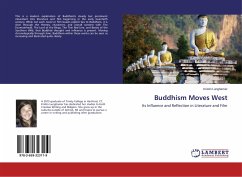What is the traditional nature and function of the guru/disciple relation in Tibetan Buddhism? How is this relation being understood and practised today in the West? This book explores the adaptation of the Tibetan Buddhist guru/disciple relation by Euro-North American communities, and argues that its praxis is that of a self-motivated disciple s devotion to a perceptibly selfless guru. Chapter one provides reception genealogies of the Tibetan guru/disciple relation in Euro-North American scholarship, and in both Tibetan and Euro-North American practice formations. Through a structural text analysis, chapter two argues that the basic definition of the Tibetan guru yoga ritual is the guru/disciple relation, mediated by the gift and transvalued through the principle of emptiness. Through structural analyses of recent anthropological data, chapter three identifies a distinct Euro-North American guru/disciple hierarchy in which the guru s authority is derived from his perceived transcendence of what Anthony Giddens calls the reflexive project of the self.








